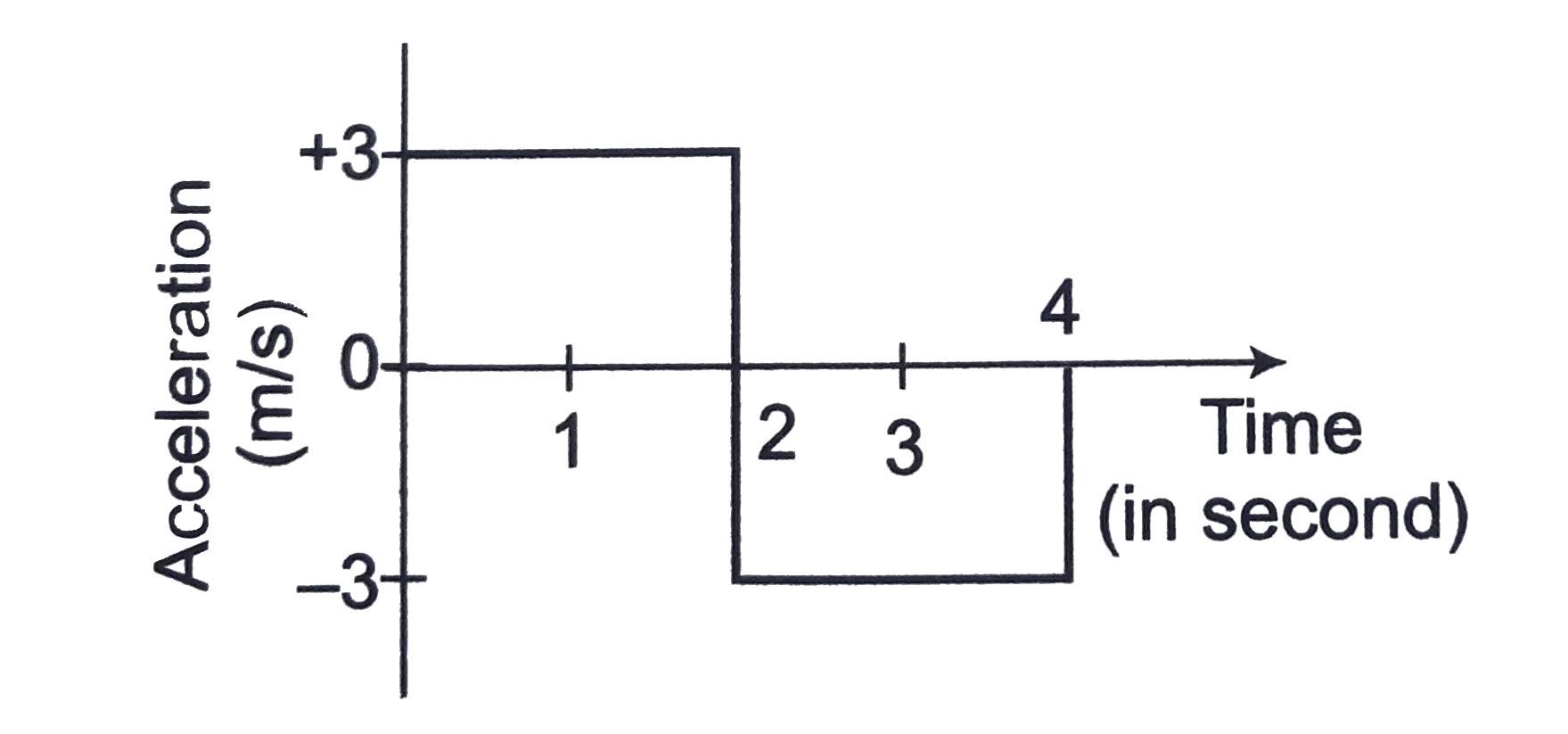The acceleration of a particle which starts from rest varies with time according to relation a=2t+3. The velocity of the particle at time t would be
2t3+3
t2+3t
2t2+3t
zero
The correct Answer is:B
To find the velocity of a particle whose acceleration varies with time according to the relation a=2t+3, we can follow these steps:
Step 1: Understand the relationship between acceleration and velocity
Acceleration a is defined as the rate of change of velocity v with respect to time t:
a=dvdt
Given that a=2t+3, we can write:
dvdt=2t+3
Step 2: Rearrange the equation for integration
We can rearrange the equation to facilitate integration:
dv=(2t+3)dt
Step 3: Integrate both sides
Now, we will integrate both sides. The left side will be integrated with respect to v and the right side with respect to t:
∫dv=∫(2t+3)dt
Step 4: Perform the integration
The left side integrates to:
v
The right side integrates as follows:
∫(2t+3)dt=∫2tdt+∫3dt=t2+3t+C
where C is the constant of integration.
Step 5: Apply initial conditions
Since the particle starts from rest, at t=0, the initial velocity v=0:
0=02+3(0)+C⟹C=0
Step 6: Write the final expression for velocity
Thus, the expression for velocity v at any time t is:
v=t2+3t
Final Answer:
The velocity of the particle at time t is:
v(t)=t2+3t
---
Acceleration a is defined as the rate of change of velocity v with respect to time t:
a=dvdt
Given that a=2t+3, we can write:
dvdt=2t+3
We can rearrange the equation to facilitate integration:
dv=(2t+3)dt
Now, we will integrate both sides. The left side will be integrated with respect to v and the right side with respect to t:
∫dv=∫(2t+3)dt
The left side integrates to:
v
The right side integrates as follows:
∫(2t+3)dt=∫2tdt+∫3dt=t2+3t+C
where C is the constant of integration.
Since the particle starts from rest, at t=0, the initial velocity v=0:
0=02+3(0)+C⟹C=0
Thus, the expression for velocity v at any time t is:
v=t2+3t
The velocity of the particle at time t is:
v(t)=t2+3t
Topper's Solved these Questions
Similar Questions
The acceleration a of a particle starting from rest varies with time according to relation, a=αt+β. Find the velocity of the particle at time instant t.
Strategy : a=dvdt
View SolutionThe acceleration of a particle, starting from rest, varies with time according to relation , a=−rω2sinomηt. Find the displacemnt of this particle at a time (t).
View Solution
Knowledge Check
The acceleration of a'particle starting from rest, varies with time according to the relation a=kt+c. The velocity of the particle after time t will be :
Akt2+ctB1.2kt2+ctC12(kt2+ct)Dkt2+12ctThe acceleration of a particle starting from rest, varies with time according to the relationA=−aωsinmegat.. The displacement of this particle at a time t will be
A−12(aω2sinωt)t2BaωsinωtCaωcosωtDasinωtω−atThe acceleration a of a body, starting from rest varies with time t following the cquation a= 3t + 4. The velocity of the body at timet =2 s will be
A10ms−1B18ms−1C14ms−1D26ms−1
A particle starts from rest and moves with an acceleration of a={2+|t−2|}m/s2 The velocity of the particle at t=4 sec is
View SolutionThe acceleration of a particle varies with time t seconds according to the relation a=6t+6ms−2. Find velocity and position as funcitons of time. It is given that the particle starts from origin at t=0 with velocity 2ms−1.
View SolutionStarting from rest, the acceleration of a particle is a=2(t-1). The velocity of the particle at t=5s is :-
View SolutionStarting from rest, acceleration of a particle is a=2t(t−1). The velocity of the particle at t=5s is
View SolutionA particle starts from rest at t=0 and moves in a straight line with an acceleration as shown below. The velocity of the particle at t=3 s is

View Solution
